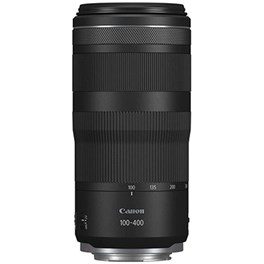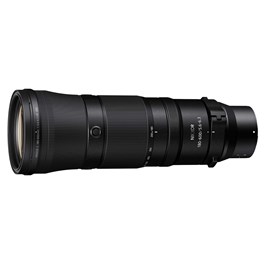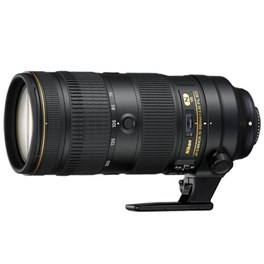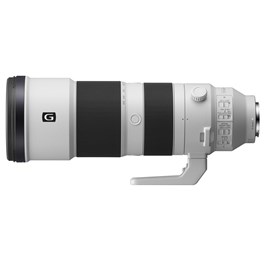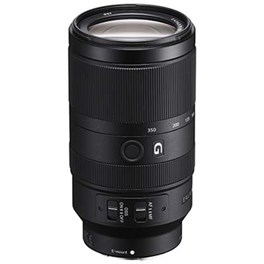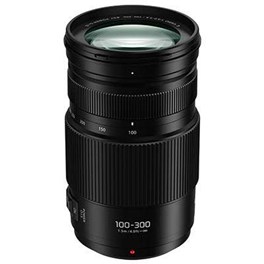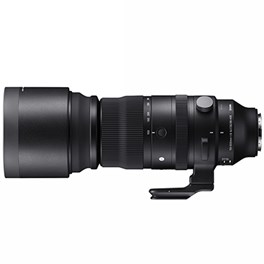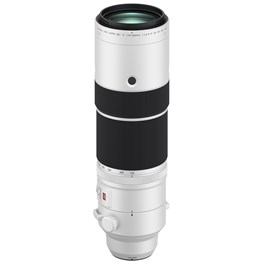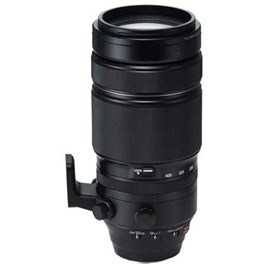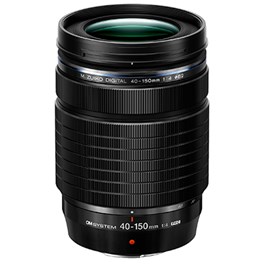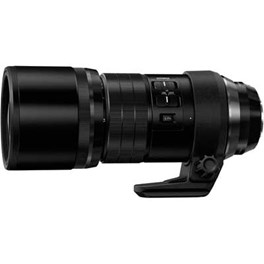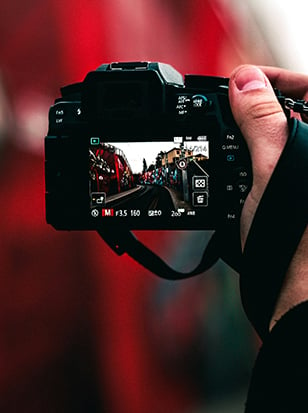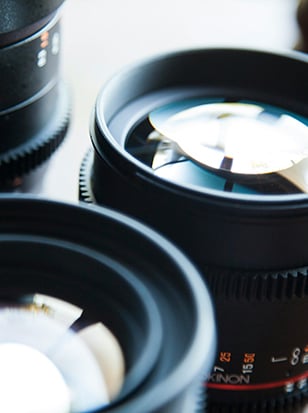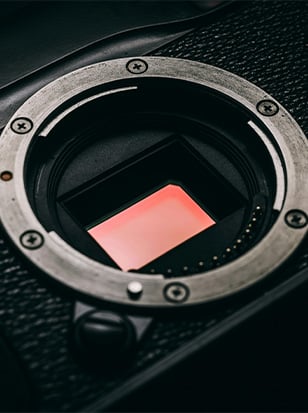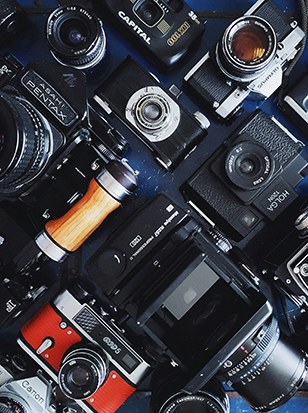
Sports photography is a tough discipline, which is why it’s worth doing your research and picking up the best lens for sports photography. Any contemporary camera system can be used for sports shooting, whether that’s causally snapping pictures of a five-a-side or getting top-quality shots down in the press pit at a Premier League game. But you really do need the right lens for the job.
So, what makes for a good sports lens? Before we get to our full list, here’s a quick rundown of things to keep in mind.
Prime or zoom - Many of the top pro sports lenses are ultra-high-end telephoto prime lenses, meaning they have a fixed focal length. We’ve elected not to include these in this guide, as they are priced at a level putting them out of reach of all but the top-end professionals (and if you’re in a position to buy a £15,000 lens, you probably don’t need us to tell you it’s good). Instead, we’ve focused on telephoto zoom lenses that can still deliver superb sports shots, without breaking the bank.
Telephoto focal length - This is pretty much essential. While we’d never say you could never use a wide lens for sports (here’s an interesting example of Canon pro Jakub Frey doing just that), for the vast majority of sports photography situations, you are going to need a telephoto lens. At least 100mm of focal length is going to be ideal. Popular zoom ranges for sports include 70-200mm, 100-400mm, 150-600mm and others – we’ve included examples of each in this guide.
Image stabilisation - A good optical stabilisation system will allow you to use slower shutter speeds at telephoto focal lengths and still get acceptably sharp shots. Useful once light starts to get low.
Weatherproofing - While not all sports are played outdoors, a lot of them are, and a good sports lens should be able to weather a little rain without seizing up.
Lastly, something to bear in mind as we go through is to remember the crop factor. Your camera’s sensor size is going to have an impact on your lens’ effective focal length, meaning you may get more telephoto than you were expecting if you’re using a smaller, more affordable camera. Cameras with APS-C sensors will multiply a lens’ stated focal length by 1.5x (or 1.6x in the case of Canon), while Micro Four Thirds cameras will double it, meaning a 300mm lens behaves like a 600mm. If you’re not sure what size your camera’s sensor is, check online with a quick Google. It may also affect which lenses you can use.
With that out of the way, let’s get into the best lenses for sports photography. We’ve split the list up by manufacturer to make it easier to navigate, and first up is Canon…
Best Canon Lens for Sports Photography
Canon has a long, proud history in the sports photography game, stretching back decades to the days of film. And today if you cast your eye into any sports photography pit you’ll still see the Canon brand well represented, only it’ll be mirrorless cameras and DSLRs looking back at you rather than analogue SLRs.
Canon’s EOS R mirrorless system is undoubtedly where the latest action is, and is certainly where the firm is putting all its money and attention. The EOS R3
is one of the most advanced sports cameras you can buy right now. However, Canon DSLRs like the EOS-1D X Mark III still enjoy a devoted following among sports shooters. As such, in this section we’ve included RF and EF-mount options to ensure everyone is catered for. And remember, you can adapt EF lenses to EOS R bodies with full functionality, as long as you have the EF-EOS R adapter.Canon RF 100-500mm f4.5-7.1L IS USM Lens
Time and time again Canon has shown their mastery of optics with stunning lenses, and this RF 100-500mm is no different. Designed specifically for use with the Canon R series, such as the Canon R5 and Canon R6, this lens is aimed at both enthusiasts and professionals alike. The compact super-telephoto zoom lens effortlessly captures wonderfully detailed and colour-rich images and video footage. It features a 5-stop image stabilisation which adds a whole new level of versatility to long-distance photography. Furthermore, it features Dual Nano USM motors that enable quick, smooth and next-to-silent autofocusing. This lens lends itself to those who wish to capture breathtaking sports and wildlife photography.
£2,499.00 inc. Cashback View
Pros:
- Generous, versatile focal range
- Not too heavy, considering
- Very good image quality
Cons:
- Narrow maximum aperture
- Extenders can only be mounted at 300mm zoom
Offering a wonderfully broad and useful 100-500mm focal range, the Canon RF 100-500mm f4.5-7.1L IS USM is a terrific option for sports shooting. At just over 1.5kg, it’s also not too heavy for a lens of its class, making you nice and agile if you need to hand-hold the camera or quickly reposition. Image quality really is excellent right the way through the zoom range – images are remarkably distortion-free even if you for some reason decide to turn the distortion correction off (not that you would).
The maximum aperture is on the narrow side, true, especially when you zoom into 500mm, but it’s still perfectly useable. This lens is compatible with Canon’s RF 1.4x and RF 2x extenders, however there is a catch – mounting one will restrict the zoom mechanism to 300-500mm, to prevent the rear elements from crashing into each other.
Pros:
- Lighter than rivals
- Stays sharp at tele end
- Great autofocus tracking
Cons:
- Still weighs more than 2kg
Tamron’s original affordable 150-600mm was a smash-hit, making sports and wildlife photography more accessible to more people, and leaving other manufacturers rushing to catch up. The G2 version came along three years later in 2016, and still today it’s one of the best sports lenses you can get for Canon DSLRs. Providing a superb balance between performance and price, it’s also quite a bit lighter than its rivals – weighing just over 2kg, compared to 2.86kg for the Sigma 150-600mm f5-6.3 Sport DG OS HSM.
With an Ultrasonic Silent Drive ring-type motor, the Tamron 150-600mm G2 is fast and responsive, able to quickly acquire focus even on fast-moving subjects. It also offers Tamron’s own stabilisation system, Vibration Compensation (or VC), which provides up to 4.5 stops of effective compensation and offers three modes for use in different situations. Weather sealing is also present and correct, with a protective fluorine coating for the front element to repel dirt and water.
Canon RF 100-400mm f5.6-8 IS USM Lens
As a lightweight zoom lens suited to photography enthusiasts and hobbyists, the Canon RF 100-400mm f5.6-8 IS USM delivers stunning images of wildlife, sporting events, and city-wide adventures. With an enhanced 5.5-stop Optical Image Stabiliser, this lens consists of a flexible focal length suited to close-up and far-off photography, as well as being affordable, compact, and portable.
£627.00 View
Pros:
- Fantastic value for money
- 5.5-stop stabiliser
- Very light and compact
Cons:
- Not weatherproofed
We love this little lens – a fantastic achievement by Canon in fitting such a capable telephoto into such a tidy little package, weighing just 635g. These feather-light proportions make the lens handle beautifully, also helped by the well-sized control ring. A Nano Ultra Sonic Motor ensures fast, reliable autofocus, and you get a built-in stabilisation delivering 5.5 stops of effective compensation. We also appreciate the nine-bladed aperture, allowing for the creation of smooth bokeh in the defocused areas of images.
This really is a fantastic little lens, especially for the money. Our only real strike against it for sports shooters is the fact that it’s not weatherproofed, meaning you’ll be limited in terms of the conditions you can take it out in. How big a problem this is will largely depend on which sports you generally shoot – if you’re ending most days covered in mud from the rally track, say, this probably isn’t the right lens for you.
Best Nikon Lens for Sports Photography
Just like with Canon, a Nikon sports shooter could potentially be using a mirrorless camera or a DSLR. In both cases you have cracking kit to set yourself up with – the Nikon Z9 is very possibly the best sports camera ever made, and pro DSLRs like the Nikon D6 still deliver the goods.
The F-mount range of lenses for Nikon DSLRs benefits from a huge amount of history. There are tons of terrific sports lenses that have been developed, both by Nikon and by third-party manufacturers, to the point where we could fill an entire guide with great F-mount sports lenses if we wanted. The mirrorless Z-mount, meanwhile, is less populated, however it’s where all Nikon development cash has been spent the past few years, meaning these lenses benefit from the most advanced optics, autofocus and stabilisation systems. Once again, F-mount lenses can also be adapted to fit Z-mount cameras and still enjoy full functionality of all features (in most cases) – all you need is an FTZ adapter.
Nikon Z 180-600mm f5.6-6.3 VR Lens
Take the long shot and bring the action closer in crisp, high-resolution detail with the Nikon Z 180-600mm f5.6-6.3 VR Lens. Built to meet the demands of wildlife and sports photography, Nikon combines a powerful AF performance with 5.5-stops of optical VR and intuitive ergonomics that maximise agility to provide users with a more flexible super-telephoto lens and greater creative potential.
£1,679.00 View
Pros:
- SPORT mode stabilises viewfinder image
- Very useful focal range
- Internal zoom mechanism
Cons:
- Narrower maximum aperture
One of the newer Z-mount lenses, the Nikon Z 180-600mm f5.6-6.3 VR Lens arrived in June 2023, and is shaping up to be a cracking sports lens. The 180-600mm range covers pretty much exactly the distance you’d want for sports shooting, and the in-lens Vibration Reduction provides 5.5 stops of effective compensation. If you need things to be clearer when composing, you can also activate SPORT mode, which stabilises the viewfinder image.
A maximum aperture of f/5.6-6.3 isn’t for everyone, but otherwise there isn;t much to fault here. Of course, it’s early days for this lens, and we’ll have to see more closely how it bears out in real-world testing. If you want a tried and tested Nikon Z sports lens, try the Nikon Z 100-400mm f4.5-5.6 S.
Nikon 70-200mm f2.8E AF-S FL ED VR Nikkor Lens
The new Nikon 70-200mm f/2.8 AF-S FL ED VR Nikkor Lens is a redesigned version of a classic lens, delivering performance upgrades in sports, action, and news shooting. Improvements include enhanced AF tracking and exposure control, edge-to-edge sharpness, minimum focus distance, and a new magnesium-alloy lens barrel. Its VR Sport mode promises to deliver exceptional burst shooting capabilities.
£2,399.00 View
Pros:
- Tough, magnesium alloy build
- Four focus function buttons on barrel
- Constant f2.8 aperture
Cons:
- Undercut on price by Sigma 70-200mm f2.8 DG OS HSM Sport
The 70-200mm f2.8 is the stalwart favourite of many a press photographer, and it delivers the goods for sport as well. Nikon’s F-mount version is one of the finest around – an absolutely blistering performer, with excellent autofocus tracking and four focus function buttons that allow the user to quickly engage features like AF Lock.
Having that wide aperture of f2.8 right the way through the zoom range gives you excellent flexibility, and images look terrific at every setting thanks to the sophisticated optical construction that includes a fluorite (FL) element. The lens also has a four-stop stabiliser built in – Nikon’s Vibration Reduction feature. It’s undeniably on the expensive side, especially for DSLRs. While we think it’s worth the money, if it’s too much for you, try the Sigma 70-200mm f2.8 DG OS HSM Sport for F-mount, which is significantly cheaper.
Best Sony Lens for Sports Photography
Shooting sports on Sony kit will certainly put you in good company. Speedy cameras like the A9 II and the class-leading Sony A1 are tailor-made to excel at the demands of sports photography, and the E-mount ecosystem has produced a clutch of superb lenses to complement them.
But it’s not all about high-end professional gear. Sony’s APS-C mirrorless cameras are also popular among amateur and casual sports shooters for their fast burst rates and super-speedy autofocus systems, with significantly lower price tags than the full frame boys. While you can use full-frame E-mount lenses with smaller-sensor cameras, lenses that have been specifically designed for this format will generally balance better. As such, we’ve included both options in this section of the guide.
Sony FE 200-600mm f5.6-6.3 G OSS Lens
Aimed at wildlife and sports photographers, this Sony FE 200-600mm f5.6-6.3 G OSS Lens will meet the needs of many enthusiasts and professionals looking for extra reach and pin-sharp clarity on their full-frame E-mount camera. Fully weather-sealed, it features an internal zoom, Direct Drive SSM autofocus system and Optical SteadyShot image stabilisation to ensure exceptional performance at all focal lengths.
£1,399.00 inc. Cashback View
Pros:
- Excellent value for money
- Beautiful bokeh thanks to 11-blade aperture
- Fast, precise focusing
Cons:
- Slower maximum aperture
- Some visible distortion (easily corrected)
While this lens doesn’t get Sony’s coveted “G Master” designation, it’s a cracking telephoto zoom nonetheless and one that any Sony-using sports photographer should consider. Designed for full-frame cameras (though it’ll work with APS-C), it’s beautifully built with full weather sealing, and uses an entirely internal zoom mechanism, meaning its balance doesn’t change when zooming. This helps make what is admittedly a pretty hefty lens feel a bit more balanced on a Sony body.
Focusing is fast and precise, and the optical stabilisation has three settings for different shooting situations. Be aware that there is some visible distortion at certain points on the zoom range, though this is easily corrected in software. One thing we love is the eleven-bladed aperture, which gives the bokeh in defocused areas of an image a lovely, smooth, rounded quality. This lens delivers excellent value for Sony shooters.
Sony E 70-350mm f4.5-6.3 G OSS Lens
The Sony E 70-350mm F4.5-6.3 G OSS is Sony's answer to the need for a compact and lightweight APC-S telephoto lens. This lens takes on board the continued outstanding G Lens quality throughout the frame and in build. The compact design will allow you to use this lens on the move and still have the reach of a telephoto lens. The enhanced optical and mechanical design enables for beautifully smooth bokeh and edge-to-edge resolution and quality.
£769.00 View
Pros:
- Balances well on A6000-series cameras
- Built-in optical stabilisation
- Very fast autofocus
Cons:
- APS-C only
- Max aperture only f4.5
Sony’s APS-C E-mount cameras, the A6000 series, have always had this reputation as being great for sport. However, for quite some time, Sony didn’t release many sports-oriented lenses that were specifically designed to fit them. As such, the Sony E 70-350mm f4.5-6.3 G OSS was a welcome addition to the line-up, delivering a sports-friendly 105-525mm equivalent focal range while weighing just 625g – thereby balancing much better on the smaller E-mount cameras than any of the full-frame telephotos.
While the maximum aperture range is a pretty pedestrian f4.5-6.3, Sony has counterbalanced this by including Optical SteadyShot (OSS) image stabilisation, making it possible to use slower shutter speeds hand-held and still get acceptably sharp images. This is especially handy when working at the maximum 600mm end of the zoom range, where you’ll only have f6.3 to play with.
Best Panasonic Lens for Sports Photography
Panasonic offers two Lumix mirrorless systems that are potentially excellent for sports photography. The Lumix G cameras are part of the Micro Four Thirds system, meaning they can be used interchangeably with not only Panasonic lenses, but also those made by Olympus/OM-System (see below for our suggestions of Olympus/OM-System sports lenses). The Four Thirds sensor is smaller than APS-C, meaning the crop factor is 2x. In layman’s terms, this means the effective focal length is doubled, so a 300mm lens behaves like a 600mm lens. This puts a lot of potential at your fingertips.
The newer Lumix S cameras, meanwhile, use a full-frame sensor and the L lens mount developed in conjunction with Leica and Sigma. While you have to pay a higher premium to get a quality telephoto for L-mount, the fact that two top-tier lens makers are so closely involved with the mount’s development means you have some truly excellent lenses to choose from.
Panasonic 100-300mm f4.0-5.6 II LUMIX G Vario Lens
The Panasonic 100-300mm f/4.0-5.6 II Lumix G Vario Lens offers a long zoom range of 100-300mm (35mm camera equivalent: 200-600mm) for capturing wildlife, sports, action, and other distant subjects. The lens takes full advantage of Panasonic's 240 fps Contrast Detection AF system featured in Panasonic's latest Lumix cameras and AF tracking performance in zooming has also been improved thanks to high-speed frame analysis for focus control.
£499.00 View
Pros:
- Ultra-affordable
- Good AF tracking performance
- Nice and light
Cons:
- Naturally not as pin-sharp as the pricey lenses
We’ve touched upon a few budget-friendly lenses already, but this Panasonic Lumix G optic is one of the best-value sports lenses around. You really do get a lot for your £499 – naturally there’s that 200-600mm equivalent focal range, but there’s also optical image stabilisation and a capable autofocus tracking system that’s great for moving subjects. All this is wrapped up in a lens that weighs a slender 528g, meaning it shouldn’t overbalance your Lumix G camera.
Does it stack up against a high-end sports lens that’s more than four times the price? No, of course not – but the Panasonic 100-300mm f4.0-5.6 II LUMIX G Vario definitely punches above its weight for the money, and should absolutely be on the shortlist of anyone putting together a cost-conscious sports photography setup. If you do want something a little more high end, consider the Panasonic 50-200mm f2.8-4.0 LEICA DG VARIO-ELMARIT POWER O.I.S, which offers a 100-400mm equivalent range.
Sigma 150-600mm f5-6.3 Sports DG DN OS Lens for L-Mount
Designed for full-frame mirrorless camera systems, the Sigma 150-600mm f5-6.3 Sports DG DN OS offers outstanding quality throughout the full zoom range and at all apertures. Cementing its place within the renowned Sigma Sports line, this 150-600mm f5-6.3 Sports lens puts a clear emphasis on operability, functionality, and flexibility to suit various shooting environments. As an ultra-telephoto zoom, this lens integrates high-performance glass optics to further aid in the production of a clear, crisp, and colour-accurate final image. Tailored to the capture of fast-moving subjects, the Sigma 150-600mm f5-6.3 Sports DG DN OS Lens further utilises a high-end AF unit equipped with a magnetic sensor and OS (Optical Stabiliser) function effective to approximately 4 stops. In short, this lens is all about capturing ultra-sharp, dynamic, and high-resolution long-reach images.
£1,199.00 View
Pros:
- Access to L-mount teleconverters
- Push-pull zoom action
- Great sharpness throughout zoom range
Cons:
- On the heavy side
- Can’t remove tripod collar
If you’re shooting with a full-frame Panasonic Lumix S camera, then you have the whole L-mount ecosystem to play with thanks to the L-mount alliance between Panasonic, Sigma and Leica. In that system, the Sigma 150-600mm f5-6.3 Sports DG DN OS is basically unrivalled, and anyone using a Lumix S camera to shoot sports would be crazy not to pick it up.
Delivering superb optical performance throughout its entire zoom range, the Sigma 150-600mm f5-6.3 Sports is a beast of a lens. What’s more, L-mount users can push it further still, as they have access to Sigma’s L-mount teleconverters, the Sigma TC-1411 (1.4x) and the Sigma TC-2011 (2.0x), meaning you can get even closer to the action if you need to. With a fast internal autofocus system, the 150-600mm also lets you use a push-pull action to zoom in and out, which both improves zooming speed and makes it easier to keep the lens trained on a distant subject while zooming.
Best Fujifilm Lens for Sports Photography
When Fujifilm added the super-speedy X-H2S to its stable, it was a sign that the firm was starting to take sports photography seriously. While there aren’t a huge number of solid sport lenses in the X-mount line-up, there are some cracking options, and the arrival of the X-H2S means we can likely expect to see a few more in the future.
All Fujifilm X cameras use APS-C sensors, so remember the crop factor and multiply all stated focal lengths by 1.5x to get the effective focal length of any given X-mount lens. Also, Fujifilm produces teleconverters in standard 1.4x (Fujifilm 1.4X XF TC WR Teleconverter) and 2.0x (Fujifilm XF 2x TC WR Teleconverter) configurations, so it’s possible to push the reach of these lenses even further.
And don’t worry – Fujifilm sports lenses are still X-mount lenses at heart. They still produce fantastic-looking images full of depth, colour and character.
Fujifilm XF 150-600mm f5.6-8 R LM OIS WR Lens
Offering a hugely versatile focusing range, the Fujifilm XF 150-600mm f5.6-8 R LM OIS WR Lens has been a much-anticipated addition to the XF lens lineup. With a 35mm equivalent focal range of 229-914mm, this lens can capture images essentially unheard of on Fuji X-mount until now. The lens is built to the highest standards and features 5 stops of IS, linear autofocus, and advanced focus control.
£1,449.00 inc. Cashback View
Pros:
- Whopping 229-914mm equivalent focal range
- … with teleconverter compatibility!
- Five-stop stabilisation
Cons:
- Narrow max aperture
- Not well-balanced on older Fujifilm bodies
Fujifilm shooters were waiting a while for a true native super-telephoto lens – but the Fujifilm XF 150-600mm f5.6-8 R LM OIS WR Lens was fashionably late and worth the wait. The crop factor of APS-C transforms that 150-600mm range into an incredible 229-914mm equivalent, and that’s in a lens that weighs a comparatively slender 1,600g. There’s also a five-stop image stabiliser – pretty much a necessity to make that tele end useable.
Something had to give of course, and some photographers may balk at that restrictive f5.6-8 aperture. Incredibly, this lens is compatible with Fujifilm’s teleconverters, meaning you could hypothetically extend the focal length to an equivalent of 1828mm. Admittedly it’s hard to think of a real-world use case for that, especially given that it would reduce the maximum aperture to f16. You have to admit it’s cool though. Yes you do.
Fujifilm XF 100-400mm f4.5-5.6 R LM OIS WR Lens
The Fujifilm 100-400mm f4.5-5.6 R LM OIS WR Fujinon Lens is a powerful zoom lens that reaches the equivalent focal range of 152-609mm in 35mm format. It has been designed for use with Fujifilm X mount cameras and to be able to cope in harsh climates. It's an ideal lens for a wildlife and/or sport photographer as it thanks to the long range as well as being able to capture pin sharp moving, distant subjects using the two linear autofocus motors. These motors combined with the five stop optical stabilisation means that this lens can be used handheld in low-light conditions and with slower shutter speeds. Additionally, this lens is weather-sealed and has a fluorine-coated front element that protects against dust and moisture.
£1,349.00 inc. Cashback View
Pros:
- Beautifully built with solid weatherproofing
- Fast, accurate autofocus
- Effective stabiliser with panning detection
Cons:
- Heavy for a Fuji lens
This rugged Fujifilm lens has been around since 2016, and still makes for a solid pairing with any of the recent high-end Fujifilm bodies. The crop factor on Fujifilm X camera means it can reach a maximum equivalent focal length of 609mm. It’s thoroughly weather-sealed, and equipped with dual linear motors that ensure quick, reliable autofocus that tracks moving subjects well – music to the ears of sports photographers. There’s also a five-stop stabilisation system for keeping shots sharp, to which Fujifilm has added panning detection. This means it won’t try to correct for intentional sideways camera movement – the bread and butter of motorsport photographers.
Sharpness is consistently excellent here – there’s drop-off at the telephoto end when shooting at short range, but that’s not something sports photographers particularly need to worry about. It weighs 1.4kg, which is heavy by Fujifilm standards, but still makes it more than useable handheld.
Best Olympus/OM-System Lens for Sports Photography
The Olympus/OM-System range has a few particular strengths that make its cameras and lenses a tempting proposition for sports photographers. These mirrorless Micro Four Thirds cameras are known for having some of the best weatherproofing in the business, making them ideal for outdoor use, and the built-in stabilisation of the most recent OM-System cameras is probably the most effective on the market when used with compatible OM-System lenses.
Again, the smaller sensor in MFT cameras means the crop factor doubles the effective focal length of your lens. This means that long telephotos made by OM-System can be a lot more compact and lightweight than their equivalents for larger-sensor systems. If you want to travel light, this could well be the system for you.
And lastly, don’t be confused about the names – OM-System is just a rebrand of Olympus following its sale to OM Digital Solutions. All the cameras and lenses will work perfectly with each other.
OM SYSTEM M.Zuiko 40-150mm f4 PRO Lens
OM System’s M.Zuiko 40-150mm f4 Pro Lens is a true marvel of photographic design and engineering. This lens, which offers a 35mm full-frame equivalent focal length of 80mm to 300mm, is one of the World’s most compact and lightweight telephoto lenses ever. It is packed with premium lenses and components that in turn offer exceptional image quality, handling and overall performance.
£549.00 inc. Cashback View
Pros:
- Incredibly light for a lens of its class
- Tough, sturdy build with IP53 weather resistance
- Excellent sharpness
Cons:
- No stabilisation
- Strong flare when shooting contre-jour
This relatively recent lens from OM-System sports an equivalent focal range of 80-300mm, and weighs just 382g, making it one of the lightest telephotos of its class. As with pretty much everything released under the OM-System banner, it’s thoroughly weather-sealed, bearing an IP53 rating that means you can take it out into basically any conditions without fear. The zooming mechanism is also entirely internal, meaning the balance of the lens won’t change as you zoom.
Image quality is great right all the way up to the tele end of the lens. It’s worth being careful when shooting directly into the light, as many users have noticed a pronounced flare effect, but otherwise it’s excellent across the board, with virtually no chromatic aberration or distortion to be seen. One thing to note though is that there’s no built-in image stabilisation, meaning you’ll be relying on the camera’s built-in system only.
Olympus M.Zuiko Digital ED 300mm f4 IS PRO Lens
At one-third the size and weight of typical 600mm DSLR lenses, the M.Zuiko 300mm f4.0 IS PRO lens (600mm equivalent) is nimble enough for hand-held shooting and compact enough to carry on even the most arduous expeditions. Industry-first 5-axis Sync IS technology employs in-body and in-lens stabilisation harmoniously to deliver six steps of shutter compensation and incredibly crisp, detailed photographs.
£2,399.00 View
Pros:
- Nice weight balance
- Superb, edge-to-edge sharpness and clarity
- Built-in optical stabilisation
Cons:
- Prime lens offers less flexibility
While we’ve mostly covered zoom lenses in this guide, a telephoto prime lens is a fantastic choice for sports – so much so that the very best tend to be priced very highly. Micro Four Thirds users have a more affordable option in the form of the Olympus M.Zuiko Digital ED 300mm f4 IS PRO, a rugged, weather-sealed telephoto prime with an effective 600mm focal length – more than enough to get close to the action.
Olympus/OM-System has long had a reputation for some of the most effective image stabilisation around, and the built-in IS of the M.Zuiko 300mm works in tandem with in-camera optical stabilisation to deliver a powerful level of compensation that’s hugely handy for working at such a long focal length. The sophisticated optical design and high-end Z Coating Nano deliver simply superb, crisp images, full of contrast and punch.

FAQs
What are the best lenses for sports photography?
Popular choices include telephoto lenses with focal lengths of 70-200mm or 300mm, and super-telephoto lenses with 400mm or more. These lenses offer reach, fast autofocus, and wide apertures.
How do I choose the right focal length for sports photography?
For outdoor sports, use longer focal lengths (e.g., 200mm or higher) for close-up shots. For indoor sports or closer proximity, shorter telephoto lenses (e.g., 70-200mm) offer versatility.
What is the importance of image stabilisation for sports photography lenses?
Image stabilisation reduces blur from camera shake, ensuring sharper shots. It's crucial in low-light conditions or when using longer focal lengths.
Should I choose prime or zoom lenses for sports photography?
Prime lenses have fixed focal lengths, offering wider apertures and better image quality. Zoom lenses provide flexibility for quickly adjusting focal lengths. Choose based on your shooting style and needs.
How do I ensure fast autofocus performance in sports photography lenses?
Look for lenses with advanced autofocus systems, quick subject tracking, multiple focus points, and fast-focusing motors. Pair with a camera body with robust autofocus capabilities and keep firmware updated.
How do we decide?
Our in-house photography experts, store staff and partners all work collaboratively to pour over our guides and tips articles. We also consider emerging trends and customer feedback to make sure our guides are always up-to-date and reflective of what people are truly looking for. By curating only the best products, our guides provide trustworthy recommendations, making it easier for customers to make informed choices with confidence.
If you would like more advice on any purchase our contact centre staff are here to help. Alternatively, you can reach us via email or social media. And don't forget. If you were to purchase anything based on our recommendations you'll be covered by our full returns policy
Sign up for our newsletter today!
- Subscribe for exclusive discounts and special offers
- Receive our monthly content roundups
- Get the latest news and know-how from our experts


